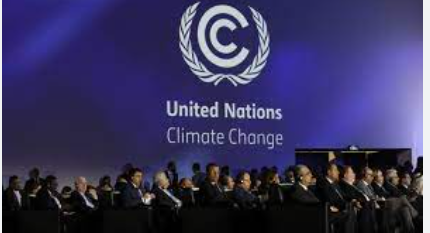United Nations Climate Change Conference
The United Nations Climate Change Conference, also known as the Conference of the Parties (COP), is an annual meeting of the member states that have signed the United Nations Framework Convention on Climate Change (UNFCCC). The primary objective of these conferences is to assess global progress in dealing with climate change and negotiate the Kyoto Protocol to establish legally binding obligations for developed countries to reduce their greenhouse gas emissions.
History and Background
The UNFCCC was adopted in 1992 at the Earth Summit in Rio de Janeiro, Brazil. The first Conference of the Parties (COP1) took place in Berlin, Germany, in 1995. Since then, the COP has been held annually in different cities around the world.
Significant COPs
- COP3 (1997): Kyoto, Japan: Adoption of the Kyoto Protocol, which set legally binding emission reduction targets for developed countries.
- COP15 (2009): Copenhagen, Denmark: The Copenhagen Accord was drafted, recognizing the need to limit global temperature increase to below 2°C above pre-industrial levels.
- COP21 (2015): Paris, France: Adoption of the Paris Agreement, which aimed to keep the global temperature rise well below 2°C above pre-industrial levels and pursue efforts to limit the increase to 1.5°C.
- COP26 (2021): Glasgow, United Kingdom: Parties agreed to the Glasgow Climate Pact, which included a commitment to phase down unabated coal power and inefficient fossil fuel subsidies.
Participation and Structure
The conference is attended by representatives from member states, as well as observers from non-governmental organizations, intergovernmental organizations, and the media. The COP consists of several bodies, including:
- Subsidiary Body for Scientific and Technological Advice (SBSTA)
- Subsidiary Body for Implementation (SBI)
- Ad Hoc Working Groups (AWGs) on specific issues
Negotiations and Decision-making
Negotiations at the COP are often complex and contentious, as countries have varying interests and priorities in addressing climate change. Decisions are made by consensus, meaning that all parties must agree on a course of action. This can lead to prolonged negotiations and compromises in order to reach an agreement.
Challenges and Criticisms
Despite the progress made through the COPs, many experts argue that the actions taken so far are insufficient to address the urgency of the climate crisis. Some of the main challenges and criticisms include:
- Lack of ambition: Critics argue that the emission reduction targets set by countries are not ambitious enough to limit global warming to safe levels.
- Inadequate support for developing countries: Developing nations often lack the resources and capacity to adapt to climate change and implement mitigation measures.
- Slow implementation: The translation of agreements into concrete actions at the national level has been slow, hindering progress in reducing emissions.
- Insufficient action on adaptation: While mitigation efforts have received significant attention, critics argue that more needs to be done to support adaptation to the impacts of climate change, particularly in vulnerable communities.
While progress has been made through the adoption of agreements such as the Kyoto Protocol and the Paris Agreement, much more needs to be done to limit global warming and support communities in adapting to the impacts of climate change. As the world continues to grapple with this urgent crisis, the COP remains an essential forum for international cooperation and action.


